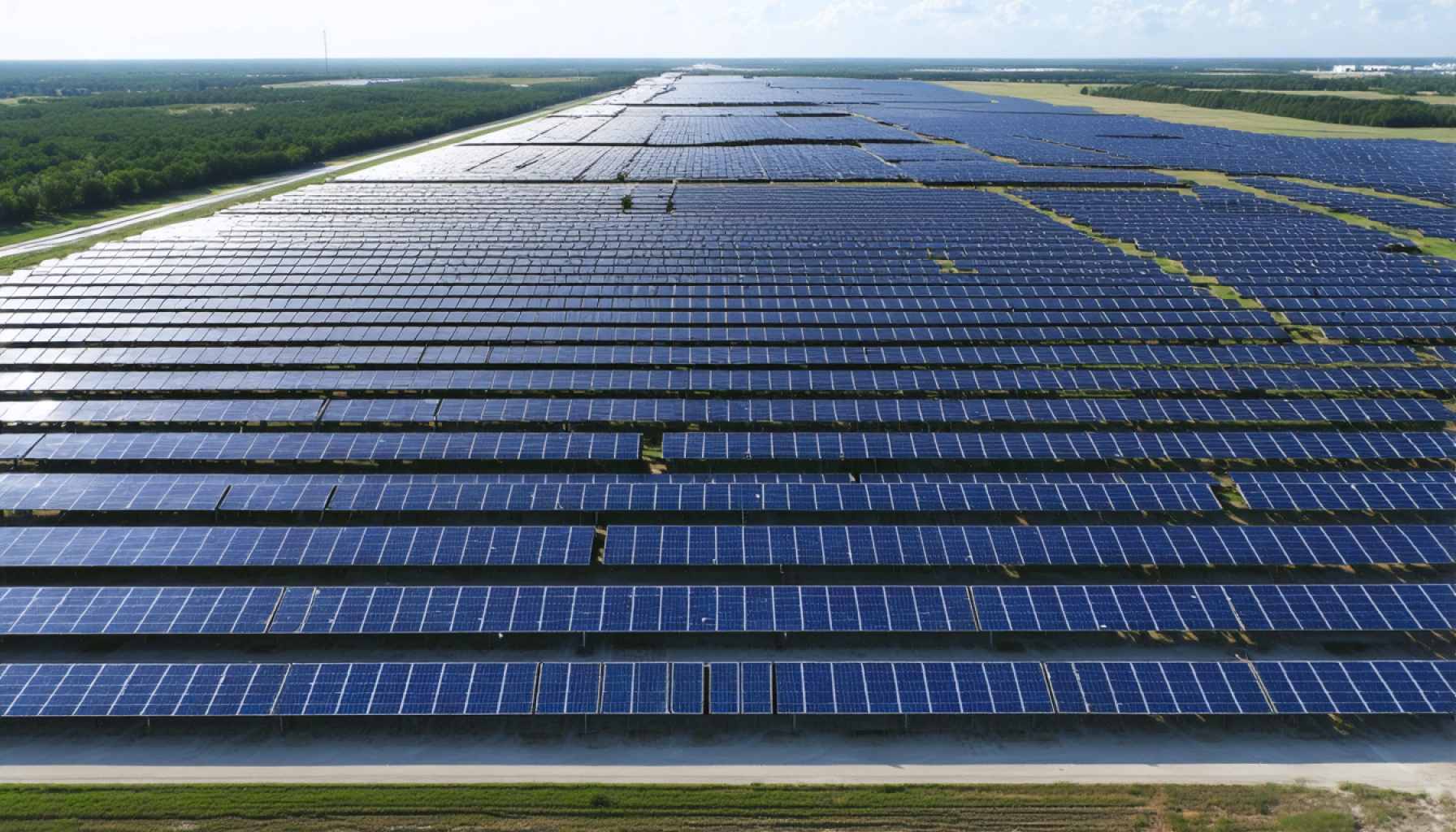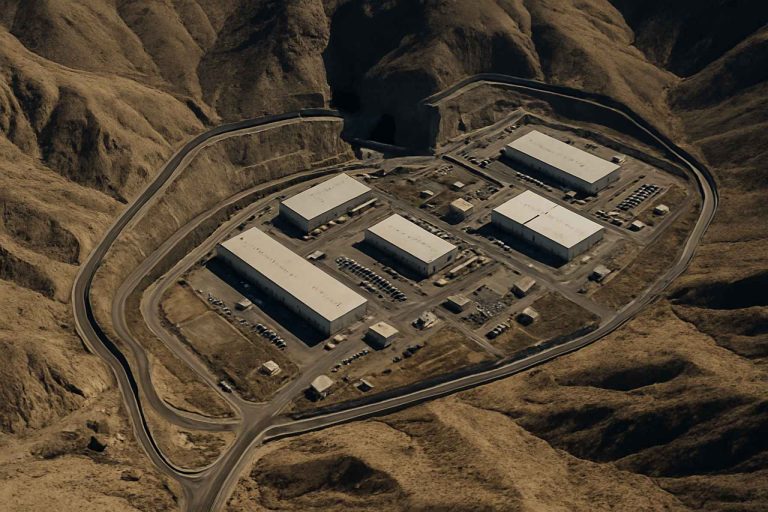
- Hornet Solar in Swisher County, Texas, is a large-scale solar project spanning six square miles with over 1.36 million panels.
- The solar farm will generate renewable energy to power 160,000 homes annually, with advanced tracking systems to maximize efficiency.
- Scheduled for operation by spring, it will generate over $100 million in tax revenue, supporting local infrastructure like schools and hospitals.
- Part of Texas’ diverse energy grid, Hornet Solar enhances stability and reliability, particularly during peak daylight hours.
- The project contributes to pollution reduction, improved air quality, and positive impacts on wildlife, especially birds.
- Solar energy’s quiet operation and lack of hazardous materials highlight its safety and dependability as a utility-scale solution.
- Hornet Solar exemplifies the transformative potential of renewable energy for a sustainable future.
Stretching across the expansive plains of Swisher County, Texas, a solar revolution is quietly unfolding. Here, amidst the gentle whispers of prairie grasses, a colossal clean energy initiative, Hornet Solar, is set to reshape the region’s energy landscape while offering a blueprint for sustainable power.
Spanning a vast six square miles and comprising over 1.36 million glistening panels, this ambitious farm captures the fierce and persistent Texas sun with a singular purpose: to generate enough renewable energy to power 160,000 homes each year. As the panels rise from the ground, they form an intricate dance with the sun, employing advanced tracking systems that follow its arc across the sky, ensuring maximum energy absorption.
Scheduled to be fully operational by spring, Hornet Solar promises more than just an influx of clean energy. The project heralds a transformative economic boon for Swisher County, projected to deliver over $100 million in tax revenue without the burden of increased taxation. This windfall is poised to bolster local infrastructure, enriching schools, hospitals, and government services.
In the broader tapestry of Texas’ energy profile, Hornet Solar stands as a pivotal player. The Lone Star State’s all-in energy production model thrives on variety, integrating every energy form into its vibrant grid. Solar, with its reliability during daylight peaks, fortifies this system against potential disruptions and secures a robust, stable energy supply.
Beyond the hum of electricity, the solar farm is a silent guardian of the environment. Its presence suggests a prudent reduction in pollution, a boost to air quality, and even a favorable impact on local wildlife ecosystems, especially bird populations that flourish in cleaner habitats.
Solar power’s inherent benefits extend beyond its environmental footprint. Quieter than the rustle of leaves, solar panels operate with minimal disruption and eschew hazardous materials, illustrating why solar energy remains a safe, dependable choice among utility-scale solutions.
As the sun sets each day over Swisher County, its energy will continue to light up homes and hopes, forging a path towards a more sustainable future. In this landscape of sun-soaked transformation, Hornet Solar stands as a testament to the power of renewable energy to illuminate not only our homes but our shared horizon.
The Solar Revolution Unveiled: How Hornet Solar is Reshaping Swisher County and Beyond
Introduction
In the heart of Swisher County, Texas, the Hornet Solar farm is more than just a renewable energy project; it represents a critical shift towards sustainable power in the state and beyond. With its sprawling six-square-mile domain and an array of 1.36 million panels, Hornet Solar is a testament to innovative energy solutions that not only promise a cleaner environment but also deliver substantial economic and societal benefits.
Exciting Facts About Hornet Solar
Here are additional facts and insights about the Hornet Solar project that further illustrate its significance:
1. State-of-the-Art Technology: Hornet Solar utilizes advanced photovoltaic technology with tracking systems that follow the sun’s movement, maximizing energy efficiency. This ensures that more sunlight is converted into electricity compared to fixed-panel systems.
2. Job Creation and Economic Benefits: The construction and operation phases of Hornet Solar have generated numerous jobs, from engineering and construction to maintenance roles. This is a significant boost to the local economy.
3. Educational Opportunities: The revenues generated from taxes are also directed towards educational improvements. Schools benefit from better funding, enabling new learning programs focused on renewable energy and technology, which can inspire future generations of engineers and scientists.
4. Environmental Stewardship: While solar panels provide significant pollution reductions, they also help preserve local wildlife habitats. By reducing air pollution, the project aids bird populations and supports biodiversity. Moreover, Hornet Solar follows best practices to minimize land disturbance.
How-To Steps for Implementing Solar Energy Projects
1. Conduct Feasibility Studies: Assess the environmental and economic impact, ensuring the site location is optimal for solar exposure.
2. Secure Financing: Explore government incentives, grants, and partnerships to support project development.
3. Engage the Community: Host informational sessions to educate the local population about the benefits and changes to expect.
4. Select the Right Technology: Invest in the latest solar panel models with tracking systems for maximum efficiency.
5. Plan for Sustainable Operation: Develop a long-term maintenance strategy to ensure the solar farm remains efficient over decades.
Real-World Use Cases and Comparative Insights
Market Trends & Industry Forecasts:
– The global solar energy market is expected to grow rapidly, driven by the decreasing cost of solar panels and increasing efficiency. According to the International Renewable Energy Agency, solar could cover a third of global energy demand by 2050.
Solar vs. Wind Energy:
– While both are prominent renewables, solar energy provides a more stable and predictable output, particularly in sunny regions like Texas. It supplements wind energy, which can be more variable.
Security and Sustainability Considerations
Security: Hornet Solar employs robust security measures, including fencing and surveillance systems, to protect against vandalism and theft. It also includes a comprehensive grid security interface to prevent cyber threats.
Sustainability: Material sourcing for panels is done sustainably, with a focus on recycling capabilities at the end of their life cycle.
Actionable Recommendations
– Homeowners: Consider installing solar panels to reduce energy bills and carbon footprints. Use local incentives for cost reductions.
– Investors: Recognize the potential for return on investment in renewable energy, as projects like Hornet Solar demonstrate considerable profitability and sustainability.
– Policy Makers: Support and incentivize solar projects for their ecological and economic benefits.
Conclusion
The Hornet Solar project is more than just an energy solution; it heralds a future where sustainability, economy, and community flourish synergistically. By integrating renewable energy into the fabric of society, it paves the way for a cleaner and more prosperous tomorrow. For more insights on solar energy and its benefits, visit energy.gov.



